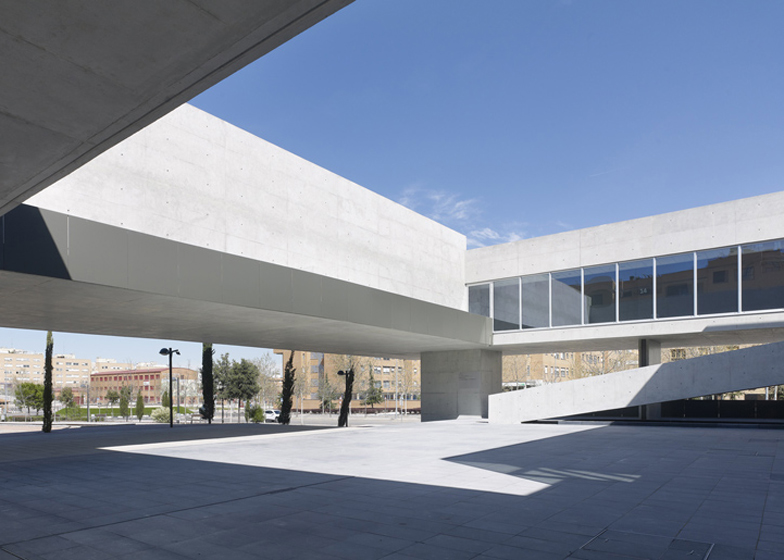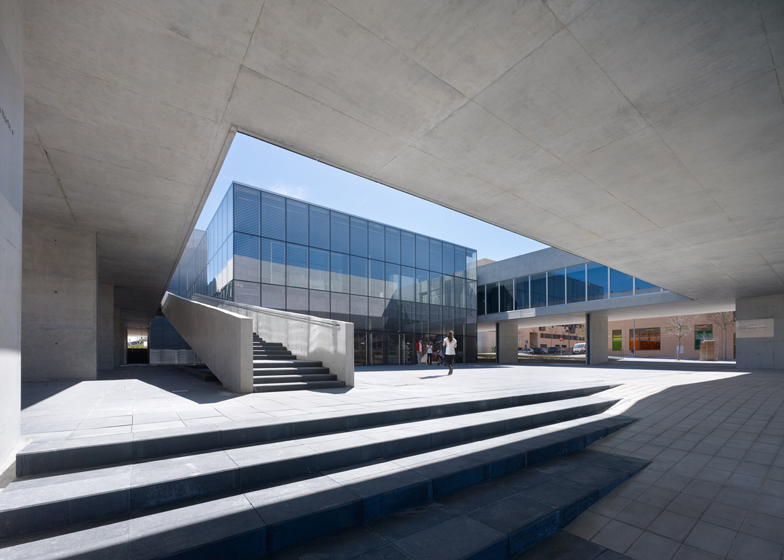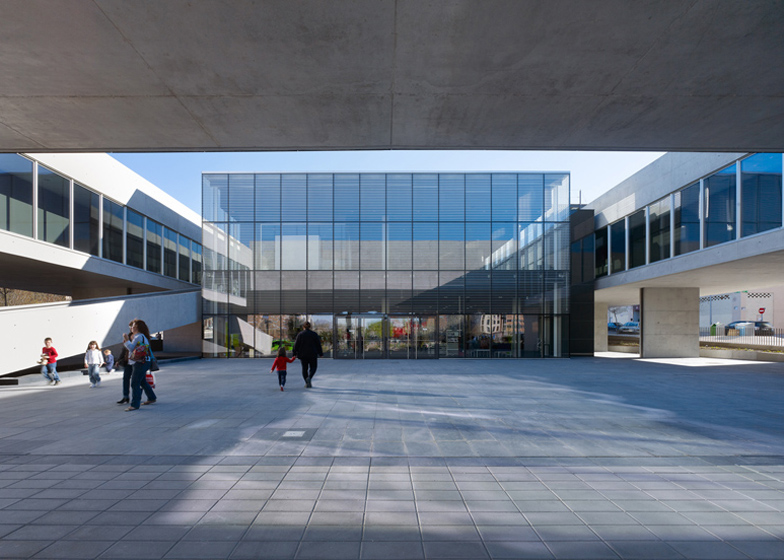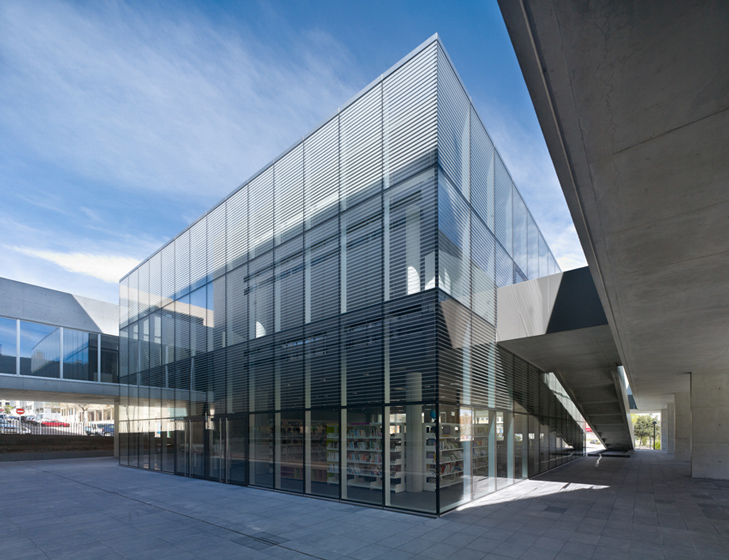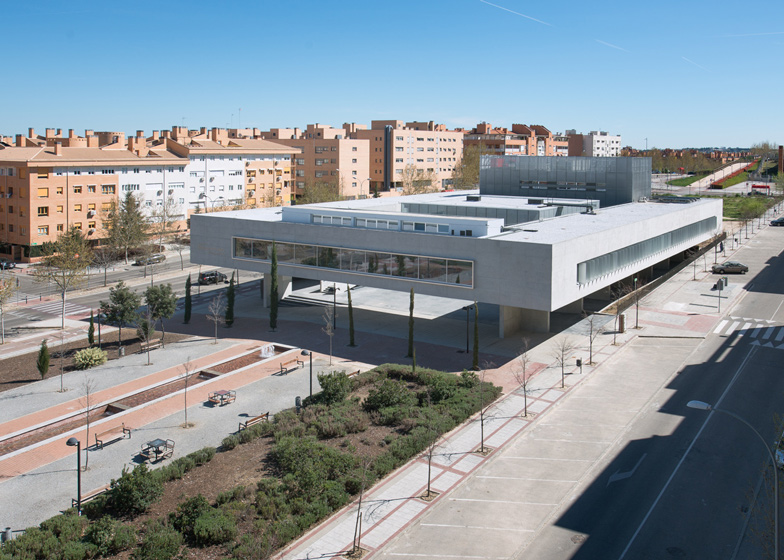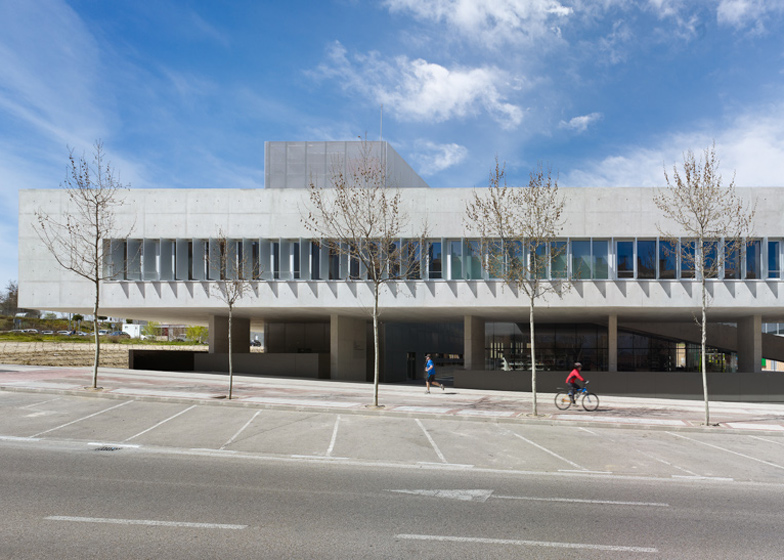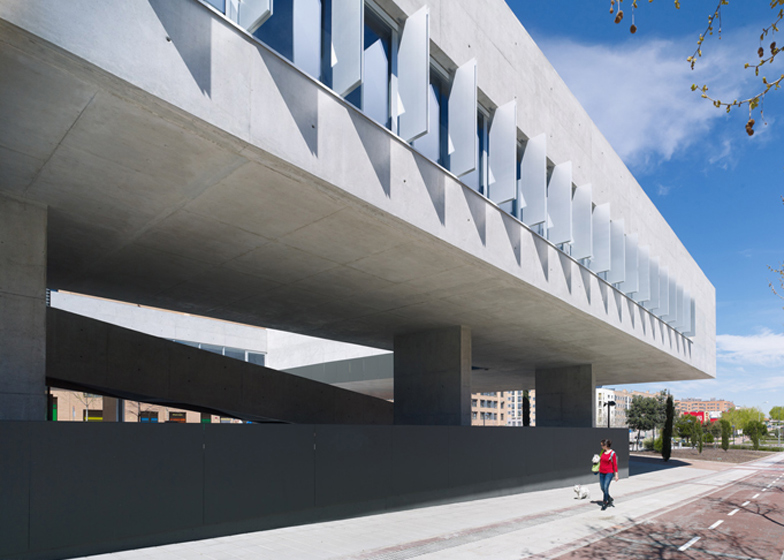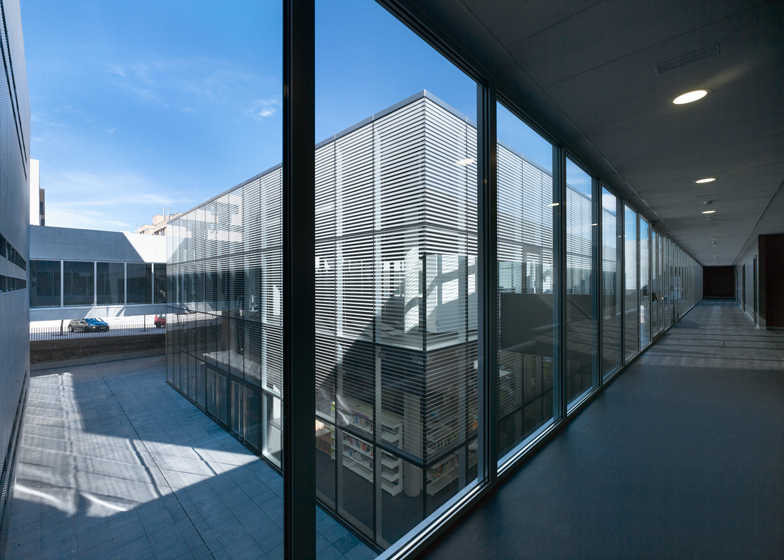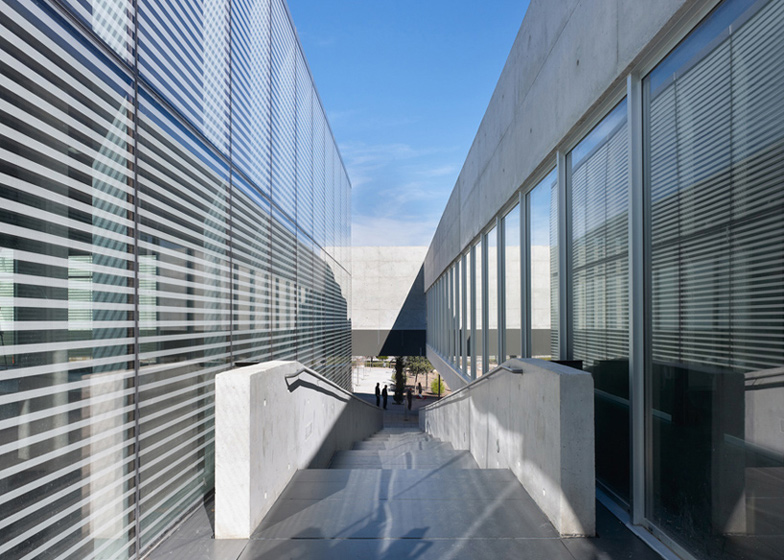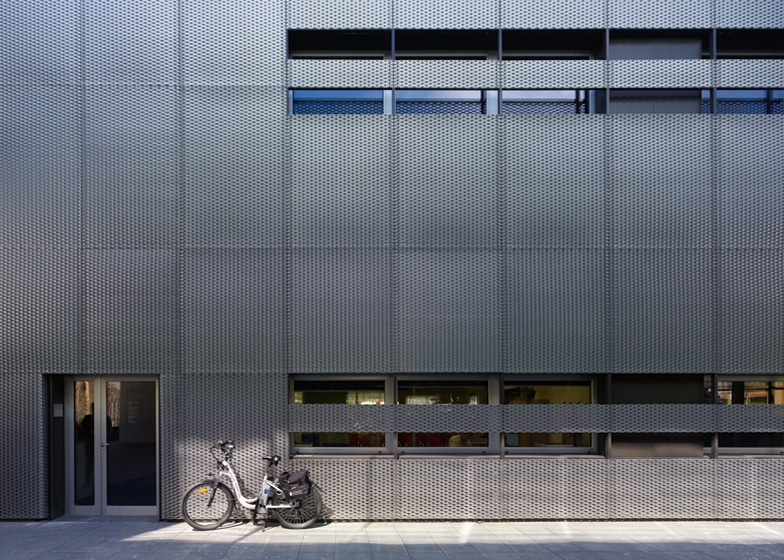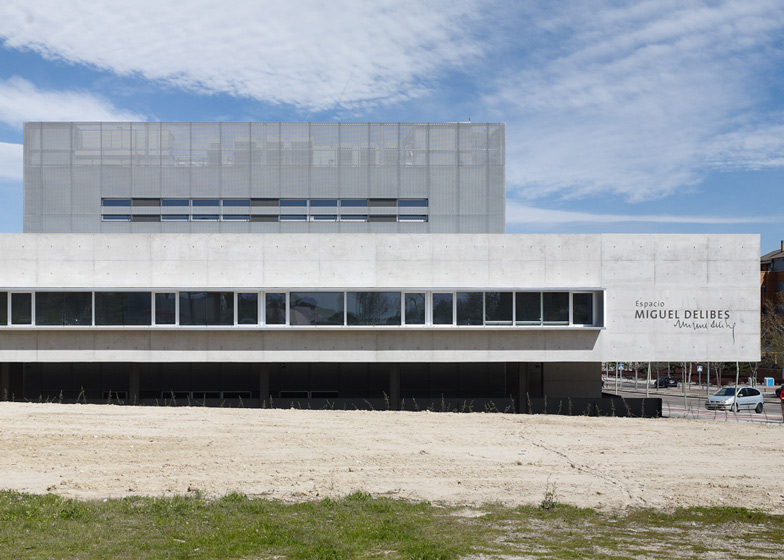This cultural centre in the Spanish town of Alcobendas comprises an elevated concrete structure supported by rows of pillars and a pair of grand public courtyards (+ slideshow).
Spanish firm Rafael de La-Hoz Arquitectos designed the Espacio Miguel Delibes to accommodate a university, the local headquarters of the PhotoEspaña International Centre, and amenities operated by the local council including a media library and a citizen's advice centre.
Situated in the developing Avenida de Pablo Iglesias area of the town – which is located on the northern outskirts of Madrid – the building occupies a 6,000-square-metre plot that is open on three sides to enhance its connection with the neighbourhood.
The facility comprises three main built components that, according to the architects, "clearly differ from each other but are completely interrelated".
"Each of these volumes have independent use and access from the street," said the studio. "They can thus be used at different times and in different ways, which allows for a completely flexible use of the complex."
The first of these structures is a raised frame-like structure containing the classrooms and lecture halls of the university, which is named Universidad Popular.
Corridors along the inner edges of this volume are lined with glazing, allowing views looks down onto the central courtyard below.
Rows of slender rectangular concrete pillars along two of the building's edges prop up the upper storey, forming a sheltered cloister-like walkway that leads to the rear of the site.
Contained within the central open space are two additional structures – a glazed cube and a taller tower clad in a perforated metal mesh – that create a pair of publicly accessible patios.
"The gap generated by the perimeter crown forms a large void, a spacious patio in which the other two volumes are inserted, leaving spaces filled with air and light between them," the team said.
A landscaped area in front of the building merges with the largest of these outdoor spaces, which functions as a patio outside the centre's main entrance.
The second courtyard is flanked on one side by the glazed cube and on the other by the taller tower. It receives less sunlight and therefore offers a comfortable shaded environment during the hot summers.
The glass box positioned at the heart of the facility houses a multipurpose event space and reception area on the ground floor, with a dedicated exhibition hall and a lounge on the first floor.
"Its centred position in the complex, between the two patios and tangential to the perimeter volume, turns it into an isolated body which, thanks to its crystalline materiality, looks like a huge night lantern from the outside," the studio added.
The use of glass was intended to give this structure an ethereal appearance that contrasts with the solidity of the concrete used throughout the rest of the complex.
Behind the glazed volume is the larger structure containing the citizen's advice service, PhotoEspaña's facilities, and rooms for the university's director and teachers.
A staircase that ascends along one edge of the larger courtyard provides access to the upper storey of the glass cube.
Photography is by Alfonso Quiroga.
Project credits:
Team at Rafael de La-Hoz Arquitectos: Carolina Fernández, Francisco Arévalo y Hugo Berenguer
Project team: Belén Rivera, Marta Tobías, Silvia Villamor y Saúl Castellanos
Graphic design: Luis Muñoz, Carlos Ripoll y Daniel Roris
Models: Fernando Mont y Víctor Coronel Benítez
Project management: DPS, Javier Poole Derqui
Quantity surveyor: Yolanda Pérez Basanta y Cristina Nicolás
Contractor: UTE: Acciona- Obenasa (estructura), UTE: Peyber-Foshidro (acabados e instalaciones)
Structural engineering: NB-35 S.L.
Service engineering: Pérez- Barja S.A.
Telecommunications: Pérez-Barja S.A.

